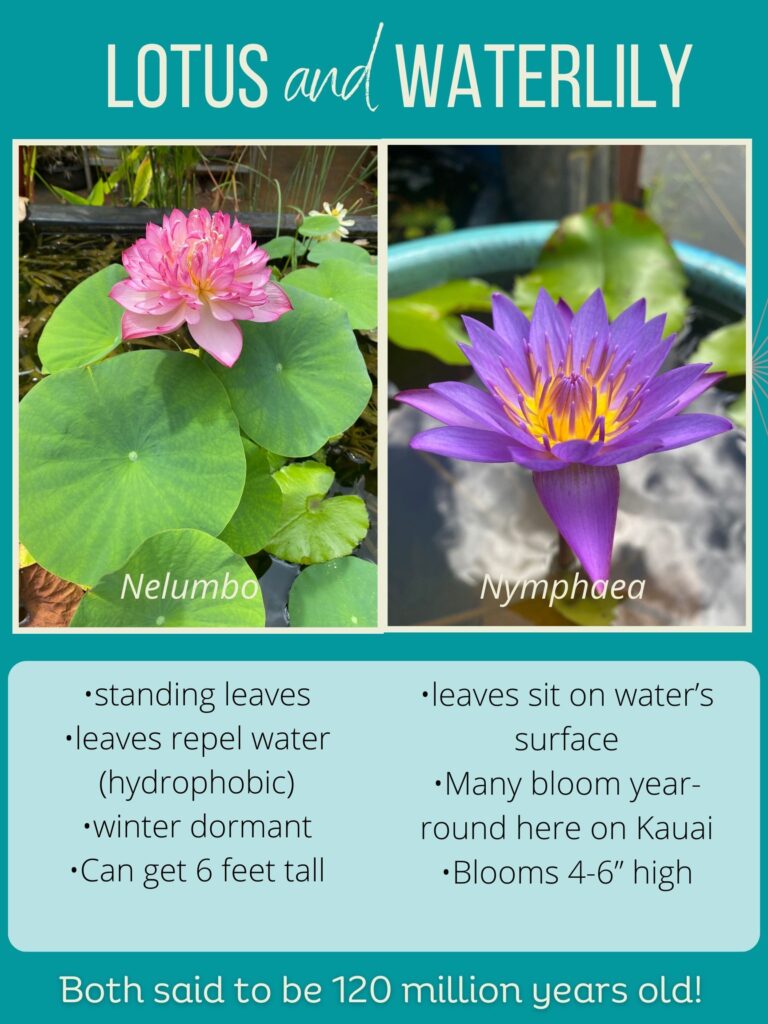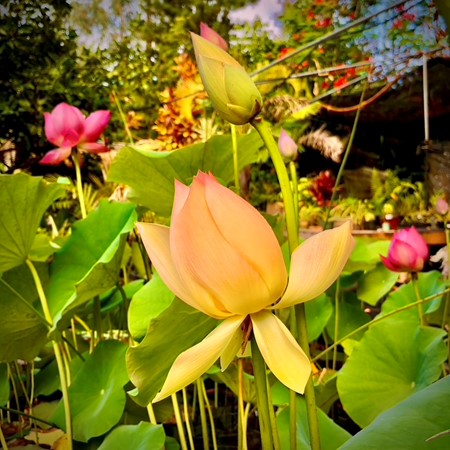Now that June is upon us, we bring our attention to the blooms that inspire artists, philosophers, and gardeners alike: water lilies and lotuses! These blooming water plants are over 120 million years old and have amazing qualities that continue to awaken and enliven us. At Garden Ponds in Kilauea, we propagate 42 varieties of water lilies and around ten varieties of lotuses.
If you have ever considered adding the alluring lotus to your garden, we have many that are showing promise for a bloom in the coming weeks. Aerial leaves are soaking up the sun, and buds are popping up! Summer solstice is the peak for lotus season, and even though the lotus will enter dormancy in the fall, now is the time to tap into the rewarding bloom season. When the lotus ‘show’ is over, you can always go back to the trusted year-round blooming water lily.
What is the difference between a lotus and a water lily?
Identifying the difference between water lilies and lotuses can get confusing, especially since in some languages, like Egyptian, there is only one word for both lotus and water lily, even though they are different species’ altogether!
Lotus has a blooming season in the summer months only, has leaves that stand up above the water’s surface, and can grow up to 6 feet tall!
- Lotus has aerial leaves that grow up above the water surface
- Water beads and repels off of lotus leaves (this is called hydrophobia)
- Lotus can grow up to 6 feet tall
- Lotus goes dormant in the fall and winter
- Lotus blooms only in the summer
- Lotus genus is called ‘nelumbo’
Water lilies have pads that sit on the water’s surface and flowers that bloom above the water, approximately 6 inches, often year-round!
- Water lily pads sit on the water’s surface
- Some varieties of water lilies bloom all year here in the sub-tropics, such as the purple Terri Dunn featured below right.
- Water lily genus is called ‘nymphaea’

